Abstract
Programmed handwriting materials were used to examine the effects of different reinforcement contingencies on the academic performance of six public school kindergarten children. The children's responses to these materials provided an educationally relevant dependent variable for the analysis of factors that affected the accuracy of their responses and the attainment of criterion performances. Variations in the complexity of most academic materials, which confound the analysis of contingencies, were eliminated by the programmed sequence so that the differential effects of three reinforcement conditions were observed. The three conditions were: baseline without tokens, tokens contingent on correct writing responses, and noncontingent tokens. It was consistently observed that the children were more accurate when their correct responses produced tokens, and that noncontingent tokens reduced accuracy below baseline levels.
Full text
PDF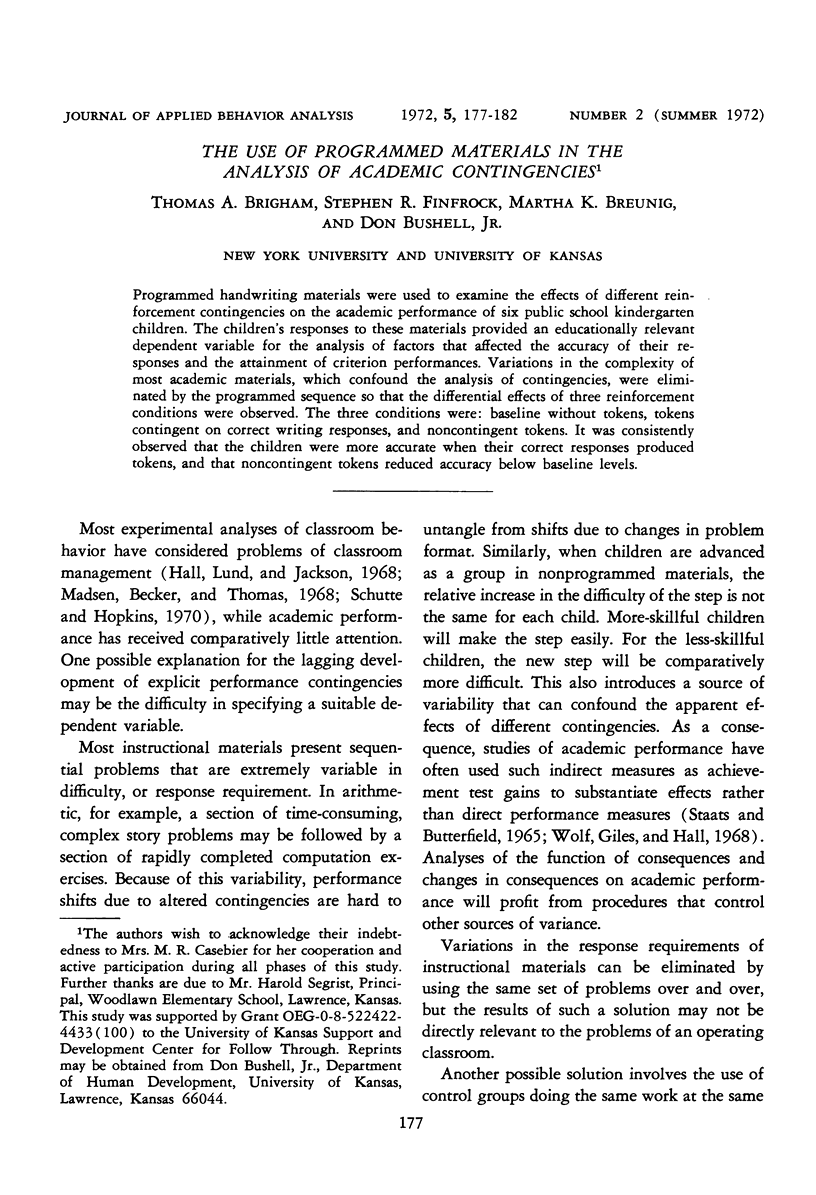
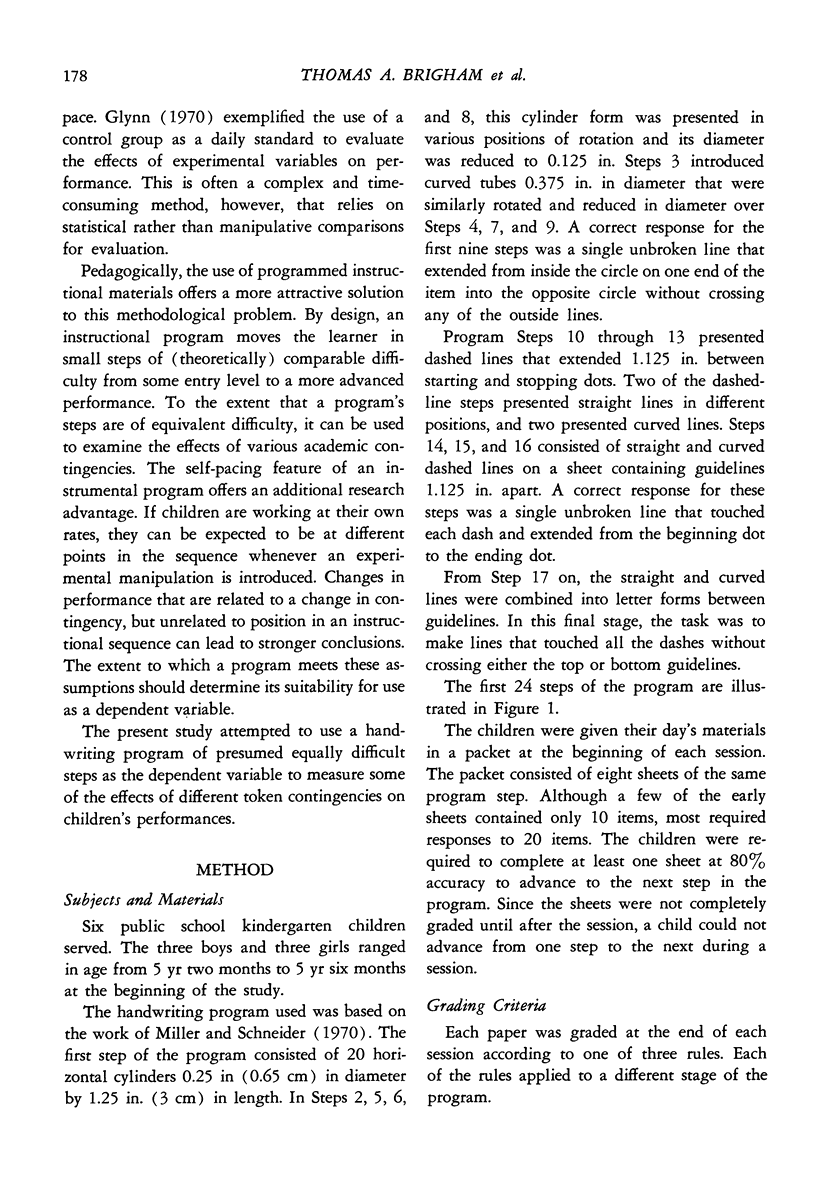
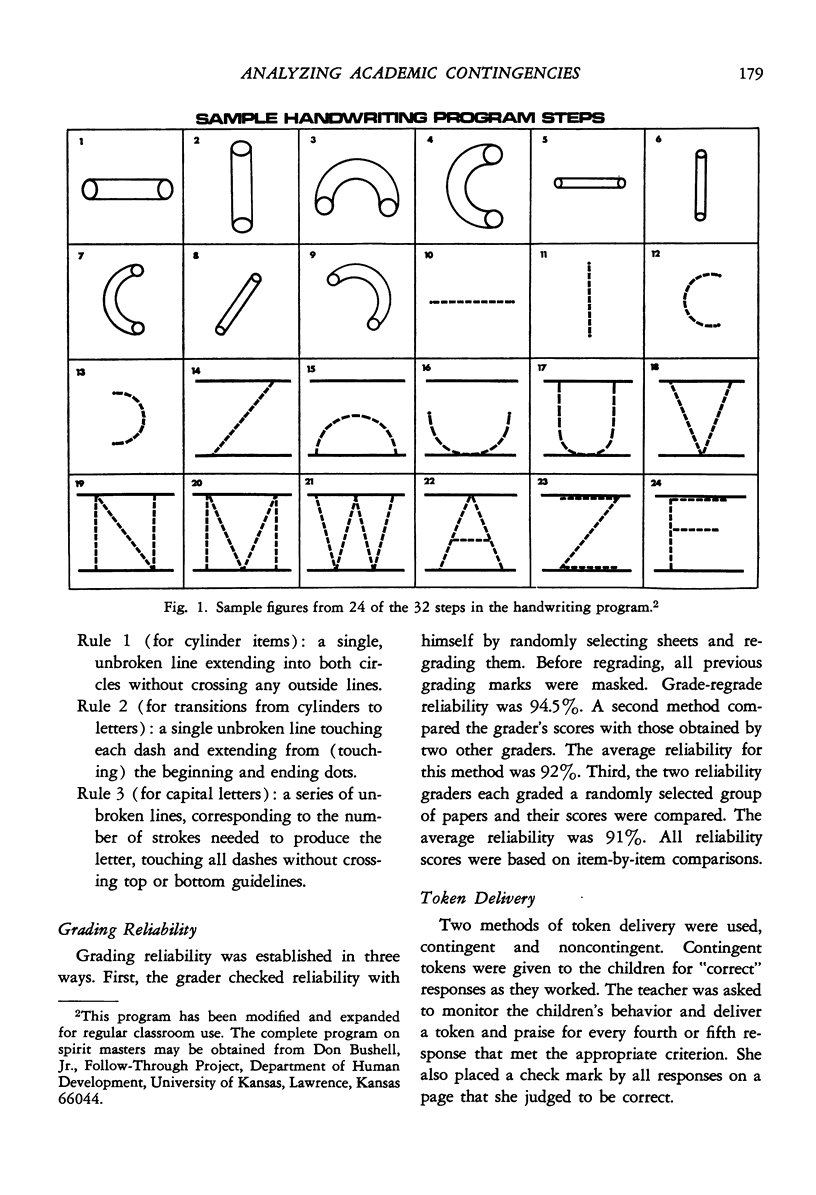
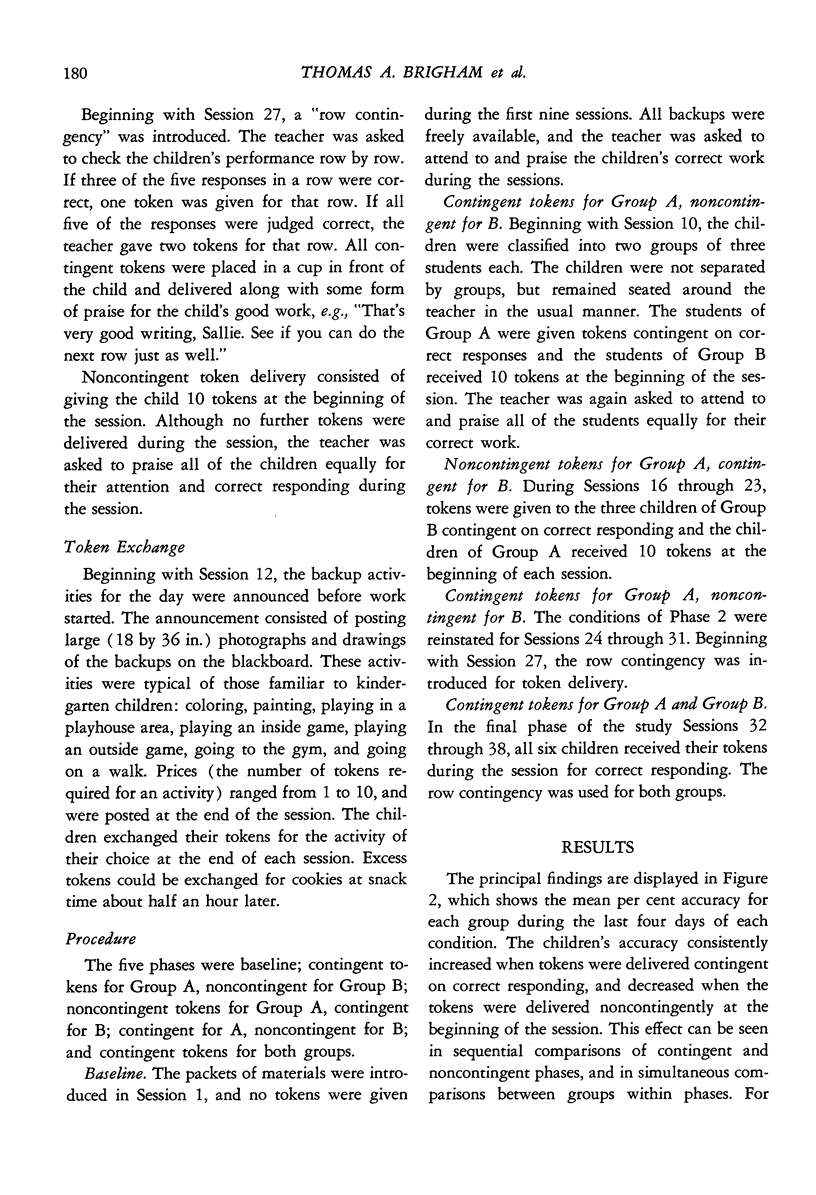
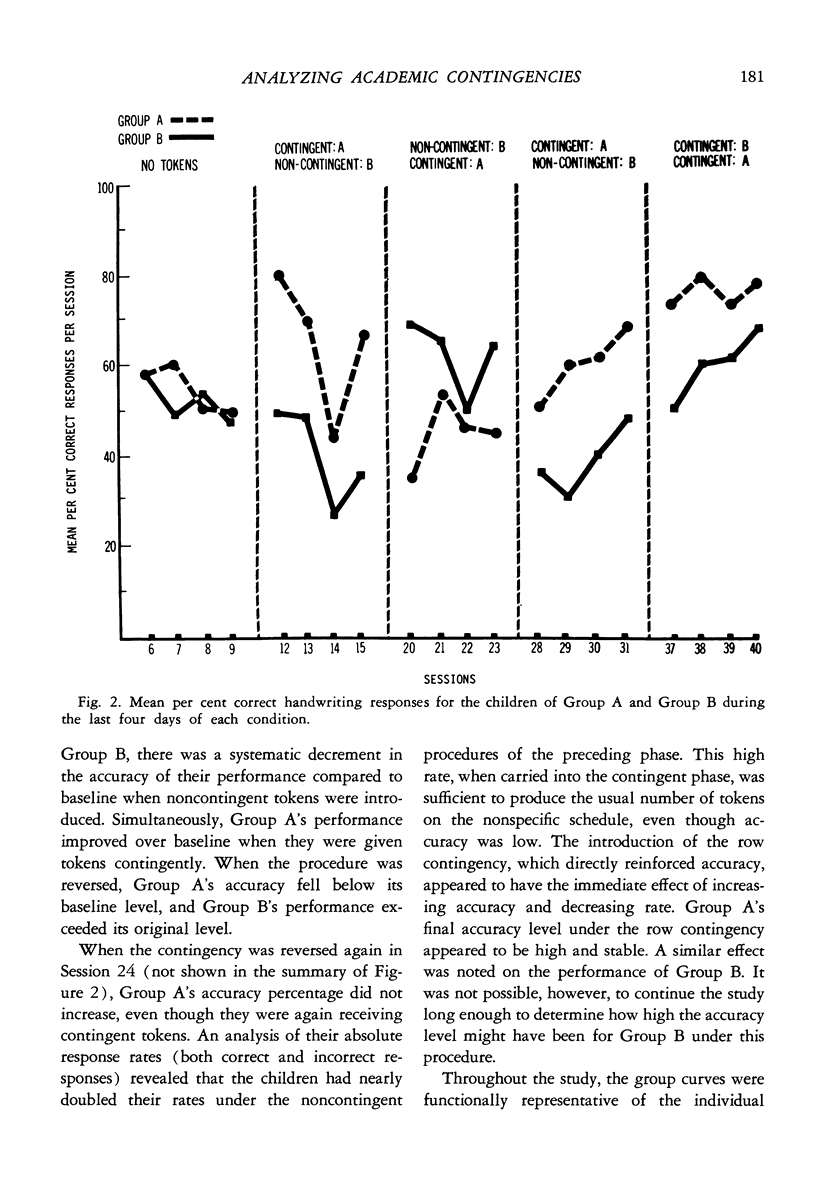
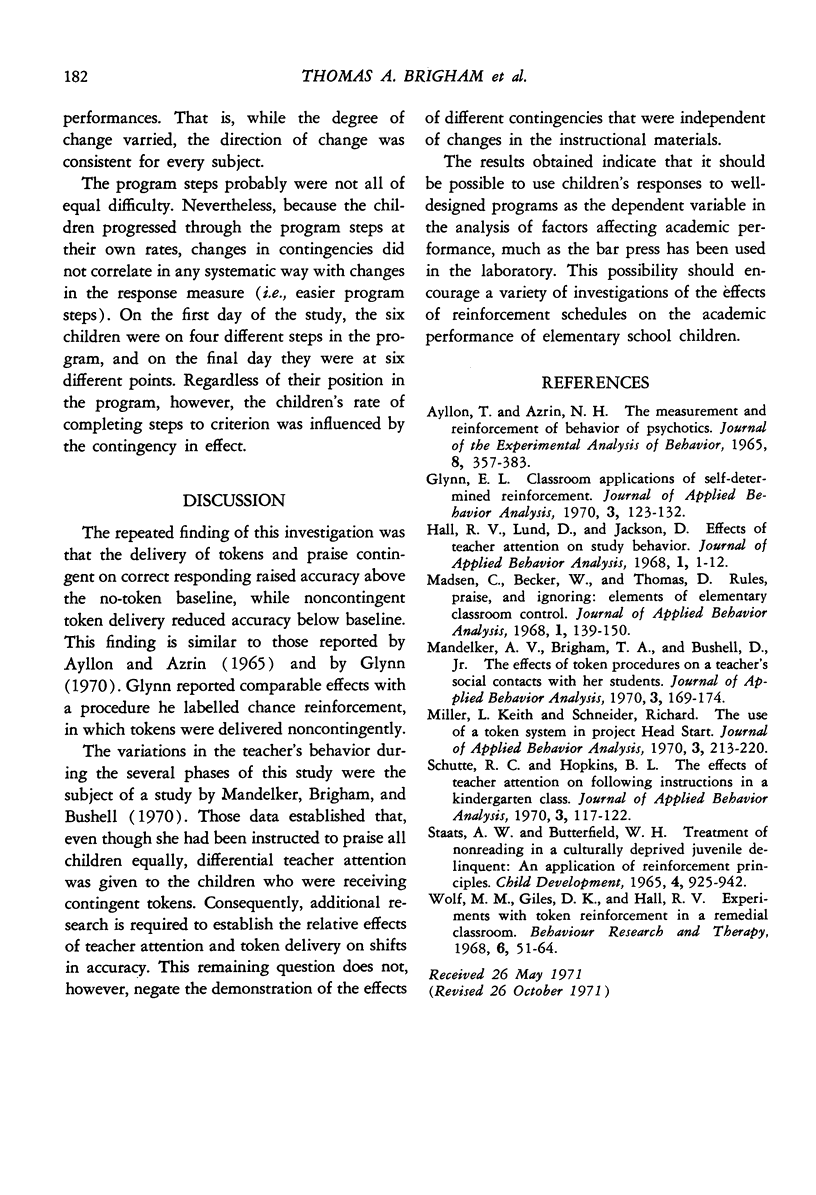
Selected References
These references are in PubMed. This may not be the complete list of references from this article.
- Ayllon T., Azrin N. H. The measurement and reinforcement of behavior of psychotics. J Exp Anal Behav. 1965 Nov;8(6):357–383. doi: 10.1901/jeab.1965.8-357. [DOI] [PMC free article] [PubMed] [Google Scholar]
- Glynn E. L. Classroom applications of self-determined reinforcement. J Appl Behav Anal. 1970 Summer;3(2):123–132. doi: 10.1901/jaba.1970.3-123. [DOI] [PMC free article] [PubMed] [Google Scholar]
- Hall R. V., Lund D., Jackson D. Effects of teacher attention on study behavior. J Appl Behav Anal. 1968 Spring;1(1):1–12. doi: 10.1901/jaba.1968.1-1. [DOI] [PMC free article] [PubMed] [Google Scholar]
- Madsen C. H., Becker W. C., Thomas D. R. Rules, praise, and ignoring: elements of elementary classroom control. J Appl Behav Anal. 1968 Summer;1(2):139–150. doi: 10.1901/jaba.1968.1-139. [DOI] [PMC free article] [PubMed] [Google Scholar]
- Mandelker A. V., Brigham T. A., Bushell D. The effects of token procedures on a teacher's social contacts with her students. J Appl Behav Anal. 1970 Fall;3(3):169–174. doi: 10.1901/jaba.1970.3-169. [DOI] [PMC free article] [PubMed] [Google Scholar]
- Miller L. K., Schneider R. The use of a token system in project Head Start. J Appl Behav Anal. 1970 Fall;3(3):213–220. doi: 10.1901/jaba.1970.3-213. [DOI] [PMC free article] [PubMed] [Google Scholar]
- Schutte R. C., Hopkins B. L. The effects of teacher attention on following instructions in a kindergarten class. J Appl Behav Anal. 1970 Summer;3(2):117–122. doi: 10.1901/jaba.1970.3-117. [DOI] [PMC free article] [PubMed] [Google Scholar]
- Staats A. W., Butterfield W. H. Treatment of nonreading in a culturally deprived juvenile delinquent: an application of reinforcement principles. Child Dev. 1965 Dec;36(4):925–942. [PubMed] [Google Scholar]
- Wolf M. M., Giles D. K., Hall R. V. Experiments with token reinforcement in a remedial classroom. Behav Res Ther. 1968 Feb;6(1):51–64. doi: 10.1016/0005-7967(68)90042-9. [DOI] [PubMed] [Google Scholar]


